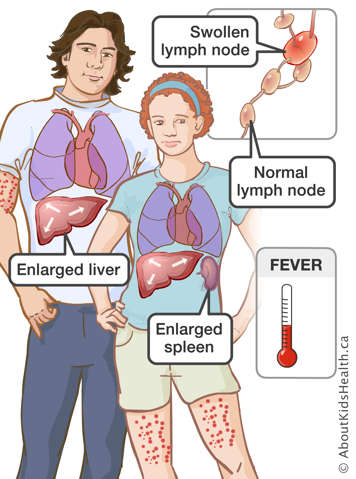Systemic (say: sis-tem-ik) JIA (sJIA) is less common than other types of JIA. It affects only 10% to 15% of young people with JIA. However, it is often a more severe form of JIA. Systemic means it affects many parts of the body, rather than just your joints. SJIA is characterized by the presence of fever, swollen lymph glands, and rash. When severe, there may be inflammation of the heart, lungs, liver, or spleen.
Quick facts about sJIA

If you have sJIA, here are a few things should know:
- It affects boys and girls equally.
- It may affect a few joints or it may affect many different ones.
- The disease may range from mild to severe.
- It causes a spiking fever. This is a fever that rapidly rises and falls. The fever typically occurs once or twice every day, often at the same time each day.
- Generally with the fever, you will feel tired and unwell. This happens most often in the late afternoon or evening. When your temperature returns to normal, you will feel better.
- The joint symptoms typically (but not always) begin within six months after the fever first appears. Usually the joint symptoms will persist, even after the fever goes away.
- There often is a rash of pale pink-red spots on the chest, upper arms, thighs, and other parts of the body. The rash may come and go with the spiking fever and may be itchy.
- Swollen lymph glands are common.
- Your liver and spleen may become larger than normal.
- You may have inflammation around your heart, lungs, or bowels. In some cases, your immune system may start to destroy blood cells.
- Eye inflammation (uveitis) does not happen very often with this type of JIA.
There are many other illnesses that also cause fever and rash in young people. In the early stages of sJIA, there is sometimes no sign of joint inflammation, such as joint pain or swelling. This makes sJIA very difficult to diagnose. Multiple tests are often needed to diagnose this type of JIA. Rarely, the body-system problems that are associated with this type of JIA, such as heart and lung inflammation, can be life threatening.
The duration of sJIA varies from person to person. Some young people will have only one episode of the disease, get better and never have a problem again. However, there are usually flares of active disease over time. Treatment is usually needed that is often different from other types of JIA, such as high doses of steroids (prednisone) and different types of biologic medication. A small number of young people with sJIA develop very severe arthritis in many joints and may require aggressive treatment to control it.






